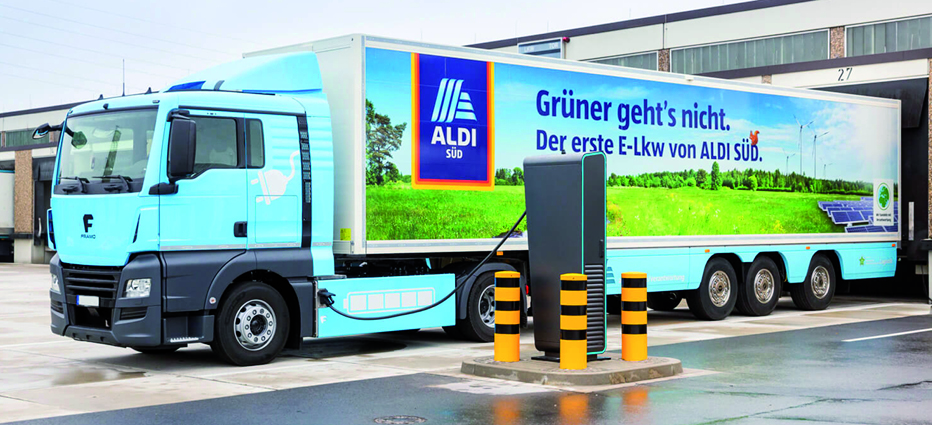 Blick in die Zukunft: Im Forschungsprojekt KISSaF arbeiteten ZF, der Lehrstuhl für Regelungssystemtechnik (RST) der TU Dortmund und der Entwicklungsdienstleister INGgreen gemeinsam an einer KI-basierten Szenenprädiktion für den Straßenverkehr.
Blick in die Zukunft: Im Forschungsprojekt KISSaF arbeiteten ZF, der Lehrstuhl für Regelungssystemtechnik (RST) der TU Dortmund und der Entwicklungsdienstleister INGgreen gemeinsam an einer KI-basierten Szenenprädiktion für den Straßenverkehr.
Artificial intelligence can make a significant contribution to road safety. Its potential in mastering confusing traffic situations is far from exhausted. To this end, ZF, the development service provider INGgreen GmbH and the Technical University of Dortmund joined forces in 2021. The KISSaF project (AI-based situation interpretation for automated driving) trains AI to predict the actions of road users. This enables automated driver assistance systems such as adaptive cruise control or lane change assistants to act more precisely and safely. After around three years, the research project has now been successfully completed. The results confirm this: The new method works better than previously used approaches.
Experienced car drivers know this: Those who drive with foresight drive more safely. But what about automated and autonomous systems? Today, AI algorithms are still reaching their limits when it comes to predicting the likely behavior of human road users. If AI improves here, this can have a positive impact on road safety – especially if more and more vehicles are equipped with highly automated or autonomous assistance systems. This was precisely the motivation behind the KISSaF research project. Consortium leader ZF worked together with the Chair of Control Systems Technology (RST) at TU Dortmund University and the development service provider INGgreen on a so-called scene prediction for road traffic.
KISSaF: Traffic training for artificial intelligence
AI-based scene prediction enables the vehicle control system to predict the most likely actions of other road users for a few seconds and act accordingly: Is the pedestrian who is apparently distracted by his smartphone about to step carelessly onto the road? What needs to be considered when changing lanes automatically? Will the car in front still brake? What other factors play a role?
“In order to train an AI so that it can reliably make such predictions, large amounts of data from real road traffic are required,” explains Dr. Till Nattermann, head of the KISSaF project and Engineering Manager at ZF. In order to record this real data, INGgreen and ZF designed a measurement vehicle equipped with sensor and actuator systems that are already close to series production. Over a distance of more than 100,000 kilometers, the test vehicle recorded camera, radar and lidar data as well as relevant GPS and weather information. The raw data from the KISSaF project comprises almost 800 terabytes, or 800,000,000 megabytes. Algorithms developed by TU Dortmund University to describe the environment prepared the data for further use in the project.
Based on this environment modeling, the AI specialists at ZF’s own AI Lab, the AI Technology Center in Saarbrücken, trained the artificial intelligence. The prediction could then be tested in the simulation and with recorded real data in the assistance systems already developed by ZF.
Anticipate instead of react: More safety through AI

After the training, the AI was able to better assess how other road users would behave. The scene prediction developed in KISSaF could enable future assistance systems to act with foresight, better anticipate potentially dangerous situations and proactively brake or take evasive action.
For example, the AI recognized potentially critical lane changes and either aborted them or did not initiate them in the first place. It was also able to anticipate gaps for lane changes and guide the vehicle safely through traffic. The AI’s ability to stop in good time at junctions in the event of oncoming traffic also improved with the procedure developed during KISSaF.
The findings of the study are primarily intended to help optimize highly automated driver assistance systems (ADAS) of automation levels 2+ and 3 according to SAE, which can be controlled by central control units and high-performance computers such as the ZF ProAI.
“We have deliberately opted for a setup that is already practical today – both in terms of the sensors for data collection and the degree of automation of the AI systems,” explains Nattermann. “These functions are therefore closer to market maturity than other systems. Raw data from the project is also relevant for future development projects. The project therefore has high practical relevance for us in several respects,” says Nattermann.
The KISSaF project has been running since January 2021 and was funded by the German Federal Ministry for Economic Affairs and Energy. ZF, INGgreen and TU Dortmund University presented the official results as part of the KoTAM (Coordination of Test Fields for Autonomous Mobility in Germany) event series in Düsseldorf on April 11, 2024.
An article from the current eMove360° magazine in german language. Download free of charge or order print version in the shop.